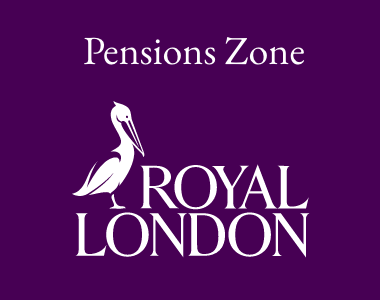40% of pension savers do not know how to access their DC pension, writes Caitlin Southall, Senior Marketing Executive at Curtis Banks.
The Institute for Fiscal Studies (IFS) has recently released their July 2023 report regarding defined contribution (DC) pension schemes, and how this type of pension is utilised and accessed. The DC landscape changed around the pension freedoms, where to quote the IFS, there was the formal end of ‘near compulsory annuitisation’ of DC wealth, enabling people to access their DC pensions in a number of alternative ways.
The IFS report that 40% of savers aged around the current normal minimum pension age (NMPA) of 55 were unsure of how to access their DC pension wealth. When it comes to SIPPs, there are a number of options available to access DC wealth, and we have outlined a few of these options below. Before we go into these options, it’s important just to recap on what crystallised and uncrystallised funds are:
Uncrystallised funds: Pension funds that haven’t been accessed by the client.
Crystallised funds: Pension funds that the client has already accessed due to payment of income or tax free cash. If a client has multiple pensions, they are able to crystallise one scheme and leave other(s) uncrystallised by way of a partial pension crystallisation.
Pension Commencement Lump Sum (PCLS)
PCLS is also known as ‘tax free cash’ or a ‘tax free lump sum’. Most SIPP clients can access PCLS, which entitles people to withdraw up to 25% of their pension, tax free, up to a maximum of £268,275 (for the 2023/2024 tax year). PCLS can only be paid from uncrystallised funds- i.e. funds which have not yet been accessed. When a client wishes to access their pension, they would typically have the choice to take some of the pension as tax free cash, and the remainder of the pension would stay in the pension fund, to provide taxable income.
Clients don’t have to take PCLS at any stage. Some clients still prefer to purchase an annuity using these funds; perhaps on the basis that they would prefer a greater annuity value using their whole pension, rather than the remaining funds after the PCLS was taken.
There are a couple of other considerations here. If a clients’ fund value increases after they have taken their PCLS entitlement, then they are not entitled to any increase in tax free cash taken. An increase in fund value will increase their amount available as taxable income however.
Additionally, if clients do want to take PCLS, then they must do so within 12 months of crystallising their fund, under HMRC regulations. After this 12 month period, if no PCLS has been taken, entitlement to take PCLS is lost. Clients may decide to access their PCLS incrementally, which is principally allowable under current rules.
Finally, there are some pension protections which may entitle those benefiting from the protection to a higher level of PCLS than 25%. For those clients, advisers should discuss the specific options with their provider.
Income: Perhaps the most well known option of accessing a SIPP is taking drawdown, where clients can take income from the pension, leaving the remainder of the SIPP untouched (and invested). The current method of taking income is called Flexi-Access drawdown, which was introduced as part of pension freedoms. There are no limits for clients who access their pension via Flexi-Access, however there can be implications for those clients with pension protection.
Flexi-Access drawdown is subject to income tax at the client’s marginal rate.
In terms of flexibility, income allows an opportunity to withdraw funds from the pension, whilst allowing the remaining funds to continue to be invested and investment gain (and loss) can be made.
Uncrystallised Funds Pension Lump Sum (UFPLS)
Not all pension providers will offer UFPLS, which was a way of accessing a pension introduced as part of the pension freedoms. The difference between PCLS and UFPLS is that part of an UFPLS will usually be free of tax and the balance would be subject to income tax at the client’s marginal rate. However unlike taking income by going into drawdown, an UFPLS payment doesn’t allow clients to take the tax free element first, and leave the balance in the SIPP as the taxable element to take later down the line.
Unlike PCLS, not everyone qualifies to take UFPLS. There are a number of restrictions as to who can take UFPLS. For example, one of the qualifying criteria is that clients with any primary or enhanced pension protections can’t take UFPLS. These restrictions are in place to ensure that clients cannot benefit from more tax free entitlements via an UFPLS than if they were to use another method of accessing their pension. In reality, the process to take UFPLS is very similar to taking PCLS, however due to the simpler rules for UFPLS, it simply can’t take into account the various complexities and nuances of the PCLS regulations, which is why the restrictions on who can access UFPLS have been introduced.
Some providers, offer regular UFPLS payments e.g. monthly. Advisers should check with the individual providers as to whether they offer this functionality.
Annuity
Annuities are a regular, guaranteed income for retirement, and can be a whole of life product, or purchased for a set number of years. Clients pay a lump sum for the right to a guaranteed income, which doesn’t rely on investment gain and strips out an element of fund volatility if the whole pension is used to purchase an annuity. Clients can hold an annuity within a SIPP, and there are a number of different annuity options available including lifetime (where the client gets a guaranteed income for the remainder of their life) and fixed-term (where the client gets a guaranteed income for a set amount of time).
The amount paid in retirement income by an annuity will depend on a variety of factors including size of pension pot, heath, lifestyle, age and what the annuity rates were at the time that the annuity was taken out.
It’s worth remembering that funds don’t stay invested in the majority of annuities, and therefore there is a risk that the markets go up and a clients’ retirement income doesn’t. Of course considering the other side of the coin, the markets could go down whilst the client is locked into an annuity. The outlier here is the investment annuity, which links part of the retirement income to investments (and this portion is therefore subject to the fluctuations of the markets).
Small pot lump sum
Small pot lump sum is a way that clients can withdraw the whole of a pension pot provided that it is worth less than £10,000. There are also other criteria that need to be met to qualify to take a small pot lump sum. One of the key criteria is that once the payment has been made, there must be no other benefits left in the pension.
In terms of taxing small pot lump sums, if the small pot is being paid from uncrystallised funds, 25% of the lump sum will be tax free, and the remaining 75% will be taxed at the client’s marginal rate. In the event that the pension is crystallised, then the whole payment will be subject to income tax.
It’s important to note that providers’ ability to offer certain drawdown options will differ due to a variety of factors, so advisers should clarify with the product provider as to what options are offered.
Obtaining financial advice is critical to achieving a client’s financial goals, and not just in respect of accessing their pension. The IFS note that take up of the free Government guidance service, MoneyHelper, has been ‘very low’. The failure to obtain financial advice will no doubt be having a direct impact on the high numbers of pension savers in their 50s and 60s who express uncertainty over how to access their pension.
[Main image: the-average-tech-guy-UEWWre_culM-unsplash]






























